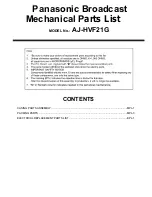
3.9.1 Connecting Refrigerant Pipes
Context
Refrigerant pipes can be routed from the top or the bottom. Select a routing mode
based on the actual situation.
NO TICE
● When connecting the indoor unit to the outdoor unit, you are advised to weld
pipes for the outdoor unit first. If the pipes have been exposed for over 15
minutes, seal the pipes to prevent dust and water from entering them.
● During the welding process, avoid burning the bottom panel, top panel, side
panels, other pipes, thermal insulation foam, cables, and labels. Take preventive
measures properly, for example, lay wet cloth around the welding position.
● During or after welding, avoid exposing the refrigerant pipes for over 15
minutes. Otherwise, system reliability is affected.
● To avoid leakage of ventilation channels and damage to copper pipes, seal the
holes after the pipes are routed. Seal the terminals of the copper pipes to
prevent foreign matter from entering the refrigerant pipes.
● If the welded copper pipes are excessively long or with bends, clean the foreign
matter inside the pipes with nitrogen.
● The refrigerant pipes should be wrapped with thermal insulation foam.
To minimize the noise due to vibration, perform the following operations.
shows the two cases.
●
When the direction of the refrigerant pipe is changed, add a support (as
) at the position that is 500 mm away from
the changing point.
●
When the refrigerant pipe is straight, add a support every 1500 mm.
Figure 3-24 Routing the refrigerant pipe
NO TE
Onsite personnel prepare the required materials and install the supports.
NetCol5000-A(025, 035) In-row Air Cooled Smart
Cooling Product
User Manual (600 mm Width)
3 Installation Guide
Issue 17 (2020-10-22)
Copyright © Huawei Technologies Co., Ltd.
52
















































